Why Do We Want What We Want? A Deep Dive into Sexual Attraction
Sexual attraction, a powerful and often perplexing force, lies at the heart of human connection, driving reproduction, shaping social dynamics, and fueling countless narratives across art, literature, and culture. But what truly underlies this complex phenomenon? Why are we drawn to some individuals and repelled by others? What are the biological, psychological, and social factors that contribute to the formation of sexual desire? This article seeks to delve into the intricate tapestry of sexual attraction, exploring its evolutionary roots, psychological underpinnings, and the ever-evolving influence of societal norms.
I. The Evolutionary Blueprint: Survival, Reproduction, and Mate Selection
At its core, sexual attraction, like many fundamental human behaviors, is deeply rooted in evolutionary biology. From an evolutionary perspective, the primary goal of any organism is to survive and reproduce, passing its genes on to the next generation. Mate selection, therefore, becomes a crucial process, influencing the quality and viability of offspring. Natural selection has favored individuals who are attracted to partners possessing traits that increase the likelihood of successful reproduction and offspring survival.
- Genetic Fitness and Health: Evolutionary theories suggest that individuals are subconsciously drawn to partners who exhibit signs of good health and genetic fitness. These signs can manifest in various physical attributes, signaling an individual’s ability to withstand disease, procure resources, and provide for offspring.
- Physical Symmetry: Symmetry in facial and body features has been linked to developmental stability and resistance to parasites. Research suggests that individuals often perceive symmetrical faces as more attractive. [1]
- Waist-to-Hip Ratio (WHR): In women, a low WHR, typically around 0.7, has been associated with higher fertility and lower risk of certain health problems. Studies indicate that men, across diverse cultures, often find women with a low WHR more attractive. [2]
- Height and Build: Height, particularly in men, can signal dominance and resource acquisition capabilities. Similarly, muscular build, though influenced by cultural ideals, can indicate physical strength and overall health.
- Skin Quality: Clear, smooth skin is often perceived as an indicator of good health and hygiene, contributing to attractiveness.
- Fertility Cues: Beyond general health markers, individuals are often drawn to cues that signal fertility and reproductive potential. These cues differ between sexes.
- Age: In general, men tend to be attracted to women in their peak reproductive years, typically in their 20s. This preference aligns with the biological reality of female fertility declining with age.
- Youthful Features: Characteristics such as smooth skin, full lips, and bright eyes are often associated with youthfulness and higher estrogen levels in women.
- Voice Pitch: Research suggests that men find women with higher-pitched voices more attractive, as higher pitches are associated with smaller body size and higher estrogen levels. [3]
- Resource Provisioning Capacity: Women, in turn, are often drawn to men who exhibit qualities associated with resource acquisition and protection. These include indicators of social status, intelligence, ambition, and physical prowess.
- Commitment Cues: Evolutionary psychology suggests that women are particularly sensitive to cues that indicate a man’s willingness and ability to commit to a long-term relationship and provide for a family. Emotional stability, reliability, and kindness can be important factors in assessing a potential partner’s commitment potential.
- Parental Investment Theory: The Parental Investment Theory, developed by Robert Trivers, highlights the different levels of investment that males and females typically make in offspring. Females, due to their greater biological investment (gestation, childbirth, lactation), are often more selective in choosing a mate, seeking partners who can provide resources and protection. Males, with a lower initial investment, may be more inclined to seek multiple mating opportunities. This difference in parental investment contributes to the observed differences in mate preferences between sexes. [4]
- The Role of Pheromones: Pheromones, chemical signals that trigger social responses in members of the same species, are believed to play a role in human attraction, although their precise impact is still debated.
- Major Histocompatibility Complex (MHC): Some research suggests that humans can detect MHC genes through body odor. Individuals may be subconsciously attracted to partners with dissimilar MHC genes, as this would result in offspring with a more diverse immune system, increasing their resistance to disease. [5]
- Androstenone and Androstenol: These compounds, found in human sweat, have been studied for their potential influence on attraction. While studies have yielded mixed results, some suggest that androstenone may be perceived as attractive by women in certain contexts.
- Limitations of Evolutionary Explanations: While evolutionary psychology provides valuable insights into the biological underpinnings of attraction, it is crucial to acknowledge its limitations. Human behavior is incredibly complex and influenced by a multitude of factors beyond genetics and reproductive imperatives. Cultural norms, personal experiences, and individual preferences all play significant roles in shaping attraction. Oversimplifying attraction solely through an evolutionary lens risks ignoring the rich tapestry of human experience.
II. The Psychological Landscape: Cognition, Emotion, and Personality
Beyond the biological imperative of reproduction, psychological factors exert a powerful influence on who we find attractive. Cognitive processes, emotional experiences, and personality traits all contribute to the complex calculus of attraction.
- Proximity and Familiarity: The “mere-exposure effect” suggests that repeated exposure to a stimulus, including a person, tends to increase liking. Proximity, therefore, plays a significant role in initial attraction. Individuals are more likely to form relationships with those they encounter frequently, such as neighbors, classmates, or colleagues. [6] Familiarity breeds liking, as repeated exposure reduces uncertainty and increases perceived safety.
- Similarity and Complementarity: The adage “birds of a feather flock together” holds considerable weight in the realm of attraction. People are often drawn to individuals who share similar values, interests, attitudes, and backgrounds. Shared experiences and common ground facilitate communication, understanding, and a sense of connection.
- Attitude Alignment: Similarity in attitudes and beliefs is a strong predictor of attraction. When individuals agree on important issues, it validates their own perspectives and fosters a sense of shared reality.
- Interests and Activities: Sharing hobbies and interests provides opportunities for shared experiences and strengthens the bond between individuals.
- Background and Social Class: Individuals from similar socioeconomic backgrounds often share similar values and cultural norms, which can contribute to compatibility and attraction.
- The Role of Complementarity: While similarity is generally a powerful force in attraction, complementarity can also play a role. Complementary needs and personality traits can create a sense of balance and completeness in a relationship. For example, an outgoing individual might be attracted to someone who is more reserved, while a dominant personality might be drawn to someone who is more submissive. However, it’s important to note that complementarity is most effective when built upon a foundation of shared values and interests.
- Reciprocity and Self-Esteem: We tend to like people who like us. Reciprocity is a powerful social norm that influences attraction. When someone expresses interest in us, it boosts our self-esteem and makes us more likely to reciprocate their feelings.
- Self-Esteem and Mate Selection: Individuals with high self-esteem tend to be more selective in their mate choices, seeking partners who are perceived as desirable and compatible. Those with low self-esteem may be more likely to settle for partners who do not fully meet their needs or expectations.
- Personality Traits: Certain personality traits consistently emerge as attractive across cultures.
- Kindness and Empathy: Kindness, compassion, and empathy are highly valued traits in a partner. These qualities signal a person’s ability to be supportive, caring, and understanding.
- Humor: A good sense of humor is often seen as attractive. Humor can make interactions more enjoyable, reduce stress, and signal intelligence and social skills.
- Intelligence: Intelligence is generally perceived as attractive, as it suggests problem-solving abilities, adaptability, and the potential for intellectual stimulation.
- Confidence: Confidence can be alluring, as it signals self-assurance and competence. However, it’s important to distinguish between genuine confidence and arrogance, which is often perceived as unattractive.
- Emotional Stability: Emotional stability is a highly valued trait in a long-term partner. Emotionally stable individuals are better able to manage stress, regulate their emotions, and provide a stable and supportive relationship.
- The Influence of Mood and Emotion: Our emotional state can significantly influence our perception of attractiveness. Positive moods can enhance our attraction to others, while negative moods can diminish it.
- Excitation Transfer Theory: This theory suggests that arousal from one source can be misattributed to another. For example, if someone experiences physiological arousal from a thrilling activity, they may misinterpret that arousal as attraction to the person they are with. [7]
- The Role of Emotion Regulation: Individuals who are skilled at regulating their emotions are often perceived as more attractive, as they are better able to manage stress and maintain positive relationships.
- Cognitive Biases and Schemas: Our perceptions of attractiveness are often influenced by cognitive biases and schemas, mental frameworks that organize our knowledge and beliefs.
- The Halo Effect: This bias suggests that our overall impression of a person influences our perception of their individual traits. If we perceive someone as attractive, we are more likely to attribute other positive qualities to them, such as intelligence, kindness, and competence.
- Confirmation Bias: This bias leads us to seek out information that confirms our existing beliefs and to ignore information that contradicts them. If we are initially attracted to someone, we may be more likely to notice and remember their positive qualities and to downplay their negative ones.
- Attachment Styles: Attachment theory, developed by John Bowlby and Mary Ainsworth, posits that early childhood experiences with caregivers shape our expectations and behaviors in romantic relationships. Different attachment styles can influence our patterns of attraction and relationship dynamics.
- Secure Attachment: Individuals with a secure attachment style tend to form healthy, trusting relationships. They are comfortable with intimacy and autonomy and are able to communicate their needs effectively.
- Anxious-Preoccupied Attachment: Individuals with an anxious-preoccupied attachment style tend to be clingy and insecure in relationships. They crave intimacy but fear rejection and abandonment.
- Dismissive-Avoidant Attachment: Individuals with a dismissive-avoidant attachment style tend to be emotionally distant and independent. They avoid intimacy and suppress their emotions.
- Fearful-Avoidant Attachment: Individuals with a fearful-avoidant attachment style desire intimacy but fear rejection and vulnerability. They tend to have mixed feelings about relationships and may avoid them altogether.
III. The Sociocultural Context: Norms, Ideals, and Media Influence
Beyond biology and psychology, social and cultural factors play a crucial role in shaping our perceptions of attractiveness and influencing our mate preferences. Societal norms, cultural ideals, and media representations all contribute to the complex construction of attraction.
- Cultural Standards of Beauty: What is considered attractive varies significantly across cultures and time periods. Societal standards of beauty are constantly evolving, influenced by factors such as media trends, fashion, and social values.
- Body Image Ideals: The ideal body shape and size differ across cultures and historical periods. In some cultures, plumpness is seen as a sign of wealth and fertility, while in others, thinness is highly valued. Media portrayals of idealized body images can exert a powerful influence on individuals’ self-esteem and perceptions of attractiveness.
- Facial Features: Preferences for specific facial features, such as eye color, nose shape, and lip fullness, also vary across cultures.
- Grooming and Appearance: Cultural norms dictate appropriate grooming practices, such as hair styling, makeup, and clothing. These norms can influence perceptions of attractiveness and social acceptability.
- Social Status and Power: Social status and power can enhance an individual’s perceived attractiveness. People are often drawn to those who possess resources, influence, and prestige.
- The “Halo Effect” of Status: Similar to the halo effect associated with physical attractiveness, individuals with high social status may be perceived as more intelligent, competent, and likeable.
- The Role of Resources: In some cultures, the ability to provide resources is a significant factor in mate selection, particularly for women.
- Media Influence and Representation: The media plays a powerful role in shaping our perceptions of attractiveness and influencing our mate preferences. Television, movies, magazines, and social media bombard us with images of idealized beauty and romantic relationships.
- Reinforcing Stereotypes: Media representations often reinforce gender stereotypes and promote unrealistic expectations about relationships.
- Creating Unattainable Ideals: The constant exposure to airbrushed and Photoshopped images can lead to dissatisfaction with one’s own appearance and create unattainable ideals of beauty.
- Influencing Mate Preferences: Media representations can influence our mate preferences by promoting certain physical characteristics and personality traits as desirable.
- Social Learning and Modeling: We learn about attraction and relationships through social interactions and observations. We observe the relationships of our parents, friends, and peers, and we learn from their experiences.
- Family Influence: Our family of origin plays a significant role in shaping our attachment styles and our expectations about relationships.
- Peer Influence: Our peers can influence our perceptions of attractiveness and our mate preferences. We may be more likely to be attracted to someone who is considered attractive by our friends or social group.
- The Impact of Technology and Online Dating: The rise of technology and online dating has transformed the landscape of attraction and relationships. Online dating platforms provide access to a wider pool of potential partners, but they also introduce new challenges and dynamics.
- The “Paradox of Choice”: Having too many options can lead to decision paralysis and dissatisfaction.
- Superficiality and Objectification: Online dating can encourage superficial judgments based on appearance and superficial profiles.
- Algorithmic Matching: While algorithms can help match individuals based on shared interests and values, they cannot fully capture the complexities of human attraction.
- Cultural Shifts and Evolving Norms: Societal norms and cultural ideals are constantly evolving. As gender roles become more fluid and diverse, our perceptions of attractiveness and our mate preferences may also change.
- Challenging Traditional Gender Roles: The increasing acceptance of non-traditional gender roles is challenging traditional notions of masculinity and femininity, leading to a broader range of acceptable and attractive traits.
- Promoting Body Positivity: The body positivity movement is challenging unrealistic beauty standards and promoting acceptance of diverse body shapes and sizes.
- Celebrating Diversity: As societies become more diverse, there is a growing appreciation for different cultures and ethnicities, which can lead to a broader range of attractive traits.
IV. The Nuances of Individual Preferences: Beyond the General Rules
While evolutionary, psychological, and sociocultural factors provide valuable insights into the general principles of attraction, it is crucial to recognize that individual preferences are highly personal and subjective. What one person finds attractive, another may not. These individual preferences are shaped by a unique combination of experiences, personality traits, and personal values.
- Personal History and Experiences: Past relationships, childhood experiences, and personal traumas can all influence our preferences and patterns of attraction.
- Attachment History: Our attachment style, formed in early childhood, can influence the types of partners we are attracted to and the dynamics of our relationships.
- Past Relationship Patterns: Past relationship experiences can shape our expectations and behaviors in future relationships.
- Personal Trauma: Traumatic experiences can significantly impact our patterns of attraction and relationship dynamics.
- Idiosyncratic Preferences: Some individuals have unique and specific preferences that may not be easily explained by general theories of attraction. These idiosyncratic preferences can be influenced by a variety of factors, including personal experiences, cultural exposure, and individual quirks.
- The Role of “Chemistry”: The concept of “chemistry” is often used to describe an inexplicable sense of connection and attraction between two people. While difficult to quantify, chemistry may be influenced by factors such as pheromones, nonverbal communication, and subconscious cues.
- Sexual Orientation and Gender Identity: Sexual orientation and gender identity play a fundamental role in shaping our patterns of attraction. Individuals are typically attracted to people of a particular gender or genders, and their attraction may be influenced by their own gender identity.
- The Fluidity of Attraction: Attraction is not always static or fixed. Individuals’ preferences can evolve over time, influenced by personal growth, life experiences, and changing social norms.
- The Importance of Open-Mindedness: Maintaining an open mind and being willing to challenge our preconceived notions about attraction can lead to unexpected and rewarding connections.
V. Conclusion: A Multifaceted and Dynamic Phenomenon
Sexual attraction is a complex and multifaceted phenomenon, shaped by a confluence of evolutionary, psychological, and sociocultural factors. While evolutionary biology provides insights into the fundamental drivers of mate selection, psychological processes such as cognition, emotion, and personality play a crucial role in shaping our individual preferences. Societal norms, cultural ideals, and media representations further influence our perceptions of attractiveness and contribute to the ever-evolving landscape of attraction.
Ultimately, understanding the intricacies of sexual attraction requires a holistic approach, acknowledging the interplay between biology, psychology, culture, and individual experience. By embracing the complexity and fluidity of attraction, we can gain a deeper appreciation for the diversity of human connection and the unique tapestry of desire that shapes our lives.
References:
[1] Thornhill, R., & Gangestad, S. W. (1999). Facial attractiveness. Trends in Cognitive Sciences, 3(12), 452-460. [2] Singh, D. (1993). Body shape and women’s attractiveness: The critical role of waist-hip ratio. Human Nature, 4(3), 297-321. [3] Collins, S. A. (2000). Men judge female voices higher in pitch as more attractive. Evolution and Human Behavior, 21(1), 45-48. [4] Trivers, R. L. (1972). Parental investment and sexual selection. In B. Campbell (Ed.), Sexual selection and the descent of man 1871-1971 (pp. 136-179). Aldine. [5] Wedekind, C., Seebeck, T., Bettens, F., & Paepke, A. J. (1995). MHC-dependent mate preferences in humans. Proceedings of the Royal Society of London. Series B: Biological Sciences, 260(1359), 245-249. [6] Zajonc, R. B. (1968). Attitudinal effects of mere exposure. Journal of Personality and Social Psychology, 9(2, Pt. 2), 1-27. [7] Dutton, D. G., & Aron, A. P. (1974). Some evidence for heightened sexual attraction under conditions of high anxiety. Journal of Personality and Social Psychology, 30(4), 510-517.


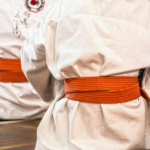











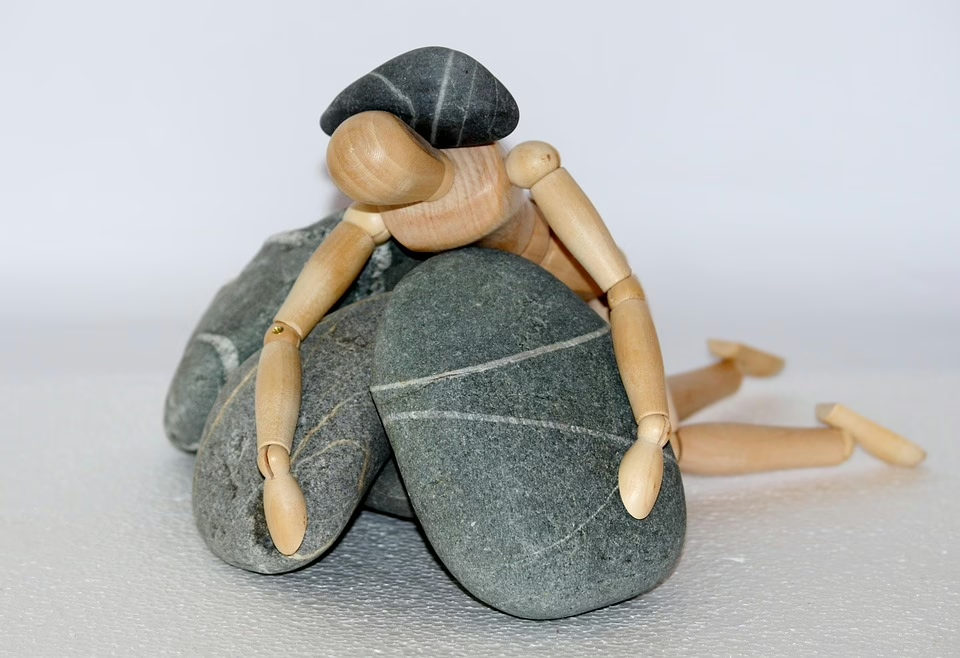
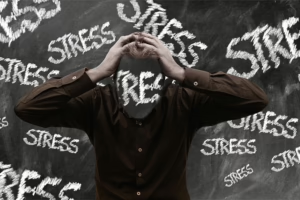


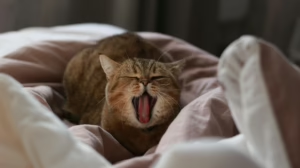
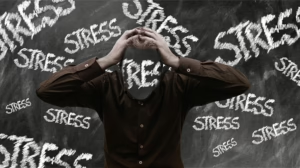





Add Comment